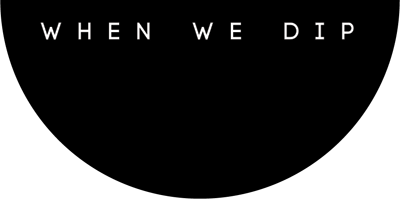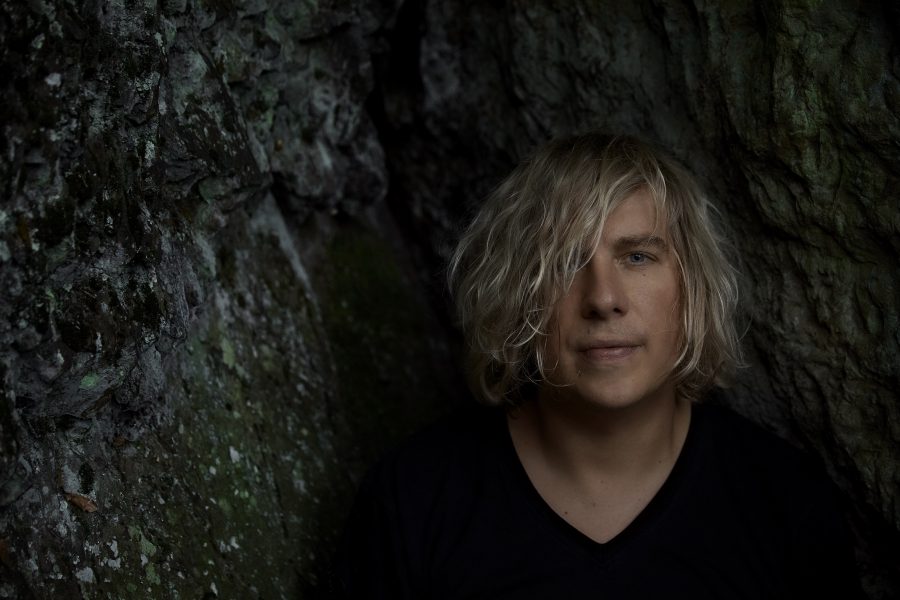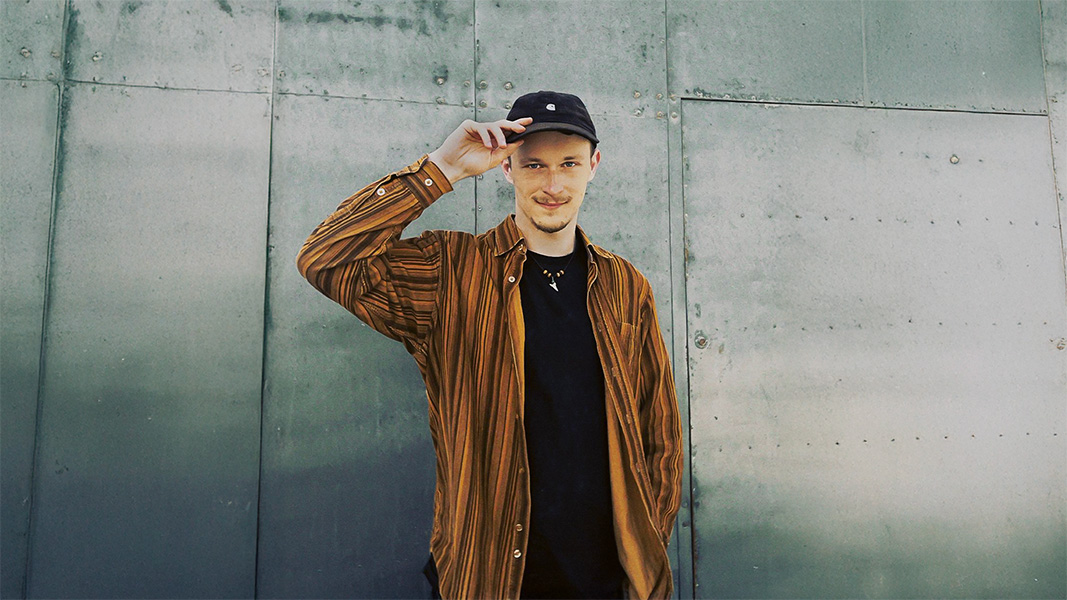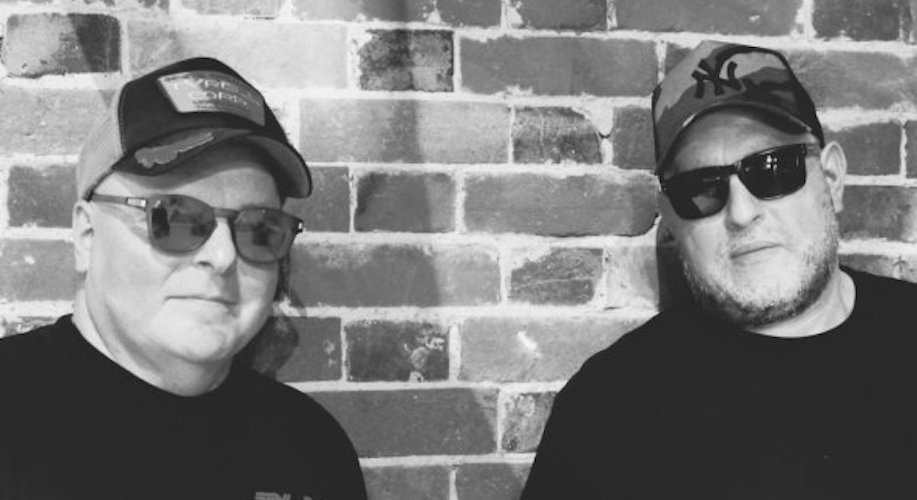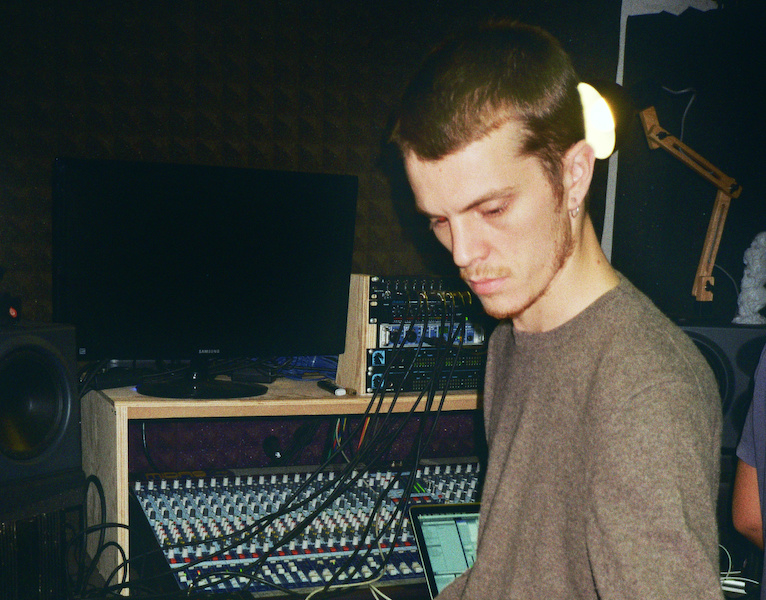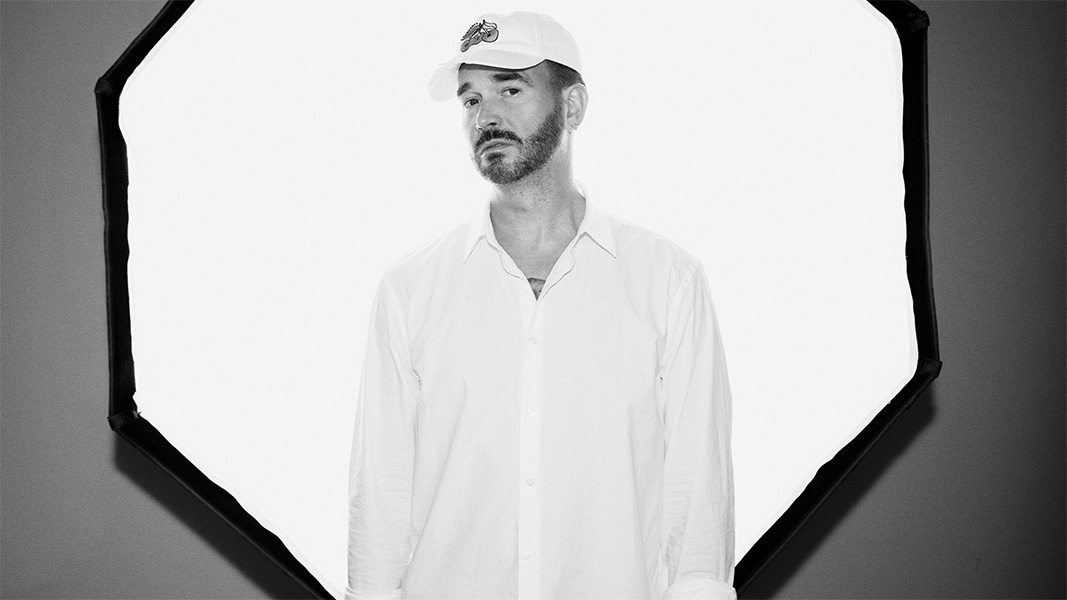More than eight years after Diorama, Dominik Eulberg releases his long awaited fifth studio album Mannigfaltig. With twelve elaborate pieces of music, he creates a burning plea to preserve the breathtaking biodiversity of nature and at the same time warns of the threat posed to it by humans. It is a detailed record that demands close listening and showcases Eulberg’s considerable synth craft, with drawn out pads and delicate keys laid over undulating rhythms that slowly take you through a wide range of emotions. Elements of ambient, downtempo, electronica, pop and minimal are infused with the sounds of nature, a choral sense of musicality and wistful air of grace across all the majestically composed pieces
“Music only makes sense for me if it has something to say. And I have something to say now!” – Dominik Eulberg
Dominik now feels that he has found a holistic and fulfilling way to use his musical platform to continue to advocate for the importance of biodiversity. “It’s my mission—my calling, if you will—to sensitise people to nature,” says the qualified biologist and ecologist, specialist nature author, ambassador and accomplished producer
He came up with the idea for the new album’s concept during a hiking tour in his home town when he first came into contact with a butterfly whose name is literally translated as ‘golden-eight.’ Then he saw a songbird called ‘nine-slayer’ and heard the calls of a dormouse, whose name in German is ‘seven-sleeper.’ This is when Dominik discovered that the seemingly casual chain went further – that for every number from one to twelve there is a name of a native animal species.
WWD: Music producer, Biologist and Ecologist which came first? How do you manage to combine them all together in such an expressive way?
I studied ecology and nature conservancy and worked as a National Park Ranger after my studies. Being in nature was the greatest thing for me as a child. I grew up without a TV and any other “medial contamination”. Nature was my entertainment system. I understood very early on that nature is the easiest, healthiest and most cost-effective way to happiness. At the same time, I quickly realised that it is our indispensable livelihood, our mother who nourishes us, we need her like a baby its mother. That is why I am in my heart, since I am able to remember, a conservationist and above all a nature sensitizer. Raising awareness, sharpening the senses to the essentials, is much more important: it is the beginning of a causal chain, because we only protect what we value. Music is an excellent tool for to catch people’s attention and give them a piece of advice. That’s why I always tag my albums with a meta-level, trying to initiate thought processes. For my recent album for example, we produced various “awareness music videos”. The renowned nature filmmaker Jan Haft shows the breathtaking diversity of the native flora and fauna for example in his clip for „Goldene Acht“. With the macro-photographer Thorben Danke, I have portrayed insects via focus stacking like humans, portrayed the individual being in order to put the displaced view on them back into an equal perspective on eye level. At the beginning of my musical career, I tried to mingle my two great passions, nature and music, more profane and naive. I recorded animal sounds in nature and made them into my music. Today, I only do this out of technical reasons, in order to have a third sonic dimension in addition to analogue and digital sound sources: the acoustic one. My way of combining these two passions nowadays is more of an indirect, pedagogical way.
WWD: What do you believe is so special about German biodiversity and how have you replicated this within the album?
For me, nature is the greatest artist of all. Its variety of shapes and colours is a symbol of the diversity of life. Nature is the main inspiration source for my creative activity. I spend a lot of time outside, doing field studies, counting birds, doing nature conservation projects. Every time I go out, I can observe something new, due to the natural life circles and rotation of the seasons. I came up with the idea for my new album’s concept during a hiking tour in my home region Westerwald a few years ago. First I spotted a butterfly whose name is literally translated as ‘golden-eight.’ Then I saw a songbird called as much as “nine-slayer“ in German and finally I heard the calls of a dormouse, whose verbatim translated name is ‘seven-sleeper’ I spotted the causal chain, went further and found for every number from one to twelve a name of a native animal species. So diverse is our nature, or more beautifully expressed so manifold. This is why the album title is ‘Mannigfaltig’ (which means manifold in German). I named each track number from one to twelve, after those ‘numeric’ animals.
WWD: With nature having such a threat from human activity, how do you hope ‘Mannigfaltig’ will affect those that listen?
It is about raising awareness. I hope that as many recipients as possible will try to understand the meta-level of the album, not dulling it without even wondering why the track titles are so ‘weird’ and why such a ‘weird’ triangle of ‘random’ animals is illustrated on the cover. I hope that maybe one or another starts to question important things again, why the conditions are as they are in our capitalistic-system, if they make a logical sense, if they are sustainable. I wish that we appreciate nature more and love it again. I wish that a little more childlike astonishment comes back about natures amazingness. I wish that we understand that everything which acts against nature, in the end also is against us humans and our descendants. I only know this one earth on which we can exist. I wish that we finally give our nature friends the space and the respect back they deserve and discard our anthropocentric hubris.
WWD: Your ability and passion to create such an album that takes into consideration its surroundings so carefully is refreshing; how do you source such inspiration and transform it into music?
I try to feel the emotions to nature with my senses wide open. The more mindful you walk through nature, the more you will experience its wondrous beauty, even on the smallest scale. I also have the approach to experience nature in a contemplative way, just enjoying it and allowing the impressions to sink without any intention to change something. After a while I am in a meditative, transcend state of mind, where I can feel much better the essence of being. This deep, primal feeling is giving me an impulse and guideline to create my music like a painter, painting a picture of the experienced nature, adding layer by layer.
WWD: From an insider’s point of view where would you tell a budding nature enthusiast to see nature at its best in your native Germany?
Nature in Germany is incredibly diverse, because we have a large variety of different habitats due to its topographic location. From the North Sea with its tides depending mudflats, over the Baltic Sea with its shallow bays and chalk cliffs, to glacially arisen lake districts, such as the Mecklenburgische-Seenplatte, low mountain ranges like my home area, the Westerwald, extensive river landscapes with riparian forests, dense beech forests such as the Hainich, marshes, up to alpine structures in form of the High Alps. As a result, you can find very different animals and plants here. There are 16 existing national parks nowadays in Germany, areas with particularly vulnerable wilderness. Those are a good starting point to experience breathtaking natural beauty. For me the quaintest area is the Mecklenburgische-Seenplatte in between Berlin and the Baltic Sea. It consists of more than 2000 lakes, mostly connected by waterways. It is a great experience to explore them gradually by canoe. In autumn, tens of thousands of cranes gather here to start the migration towards south in company. An incredible spectacle when they fly in from the fields to their sleeping waters at dusk. The sky darkens due to its massive fly-in and the air is full-filled with deafening trumpeting.
WWD: It’s been more than eight years since the release of ‘Diorama’, has your process of creating sound changed at all?
Mannigfaltig is an album about the variety and colorfulness of nature. On this album I wanted to mirror the endless variation of nature and highlight the entire colour-palette of life. During its creation-process I always looked for an innovative momentum, and never tried to imitate anything, or even myself. My musical motivation was always intrinsically, I didn’t care about trends or so. I just made this kind of music, which came out of my mind and feelings. I think it is a personal advancement thanks to new production techniques, new equipment and allowing myself even more to be and sound like myself. I usually start to play the main melodies or even draw them in the DAW. Harmonically matching, I then play pads and basslines. Finally, I program the drums that fit. If I have enough content, I start to arrange the track. Thereby certain parts fall out again, because they are not necessary anymore and necessary new parts will be created. The rough mixing, I do already directly in the development process, the finetuning comes to the very end.
WWD: Track titles on the album literally translate into the names of native German animal species, do each of the tracks represent the species in a particular way for example, their behaviours?
Developing the concepts is always the first thing I do on an album. So, I already have the concept even for my next album ready in my drawer; I know, how the cover will look, and the titles will be named. It’s not that hard for me to develop these concepts because I like to do that. I also do that out of a very pragmatic reason: Making music is nothing else than the selection out of an infinite number of options. So, I can play this note with this synthesizer, then this with this synthesizer etc. You can get lost very quick. But when I have a clear concept, I already have a common thread on which I can work along, showing me where to go. In “Mannigfaltig” I made tracks inspired by the phenotypes and habitus of the twelve animal protagonists. Like a painter painting a picture, I then tried to acoustically implement these emotions. That is of course very subjective, but it helped me a lot with the questions “Where is the beginning, where is the end, where is it going?”. About that it must be exactly twelve pieces, was predetermined from the outset by my own concept. Here’s a little example: The sixth track of the album is called Sechslinien-Bodeneule, English Six-striped Rustic, a moth with six distinctive lines on each reddish-brown colored forewing. I intended to narrate the miraculous metamorphosis here, from egg, caterpillar, chrysalis to butterfly. As you may notice, the individual stages of development strongly fragment this track. In the beginning there is the oviposition of the barrel-shaped egg, which inspired me with its distinctive ribbed structures to special sequences. In the first break, the greenish-gray caterpillar hatches, feeds steadily through the rhythm’s framework. Finally, the pupation, the incomprehensible metamorphosis. In this second-long break, as in the butterflies transformation, the larva is almost completely dissolved by its digestive juices and dies. Only a few percent of the original tissue survive. Consisting out of those few cells, a completely new being develops and finally hatches out of the chrysalis as a butterfly, which I have tried to sketch with previously unheard, breezy rhythm structures and melodies which are buzzing more and more off.
WWD: In your opinion, how can electronic music and nature can work harmoniously together?
Music is a perfect way to reach people and sensitize them for something thoughtful. A big problem of our time is the knowledge transfer of essential topics to public. We have amazing scientists, but often their knowledge benefits only a few, because the building bridges to the masses are missing. The electronic music industry is reaching a lot of young people, the future of tomorrow. Many festivals take place in nature, where people can reconnect with our natural environment, a small contribution against alienation from it. Also, a lot of festivals are doing a great job for sustainability awareness, as they are only using green energy, serving vegan food and being a plastic-free event. I love to use this setting to do bat excursions or ornithological tours on big festivals or before club gigs. It is very attractive for the audience to do such a tour with their favorite DJ and it is a great opportunity to catch them, to inflame their hearts for the beauty and the refinement of nature. For me, this closeness to nature, is the first step to recognize the need for protecting nature and our living environment.
WWD: What can we expect from your forthcoming single ‘Funffleck Widderchen’?
Fünffleck-Widderchen, English: New Forest Burnet, is a diurnal moth with five red spots per forewing. This so cute looking butterfly is highly toxic because it can release hydrogen cyanide. Because of that it is inedible for predators and signals this unmistakably by its metallic-blue colour and the widely visible blood-red spots. I wanted to interpret this toxicity by a hypnotic trip which may encourage you to transcendental thoughts. For that I created polyrhythmic sequences which are sometimes playing triplets, but their transpositions are still in the classic 4/4 scheme. In interaction with its broken beats and the wide Oberheim theme with no clear start or end, it develops its own mental maelstrom.
WWD: Can we expect anything special on the album tour of ‘Mannigfaltig’?
There is a special tour date for each of the twelve animal protagonists. On some events, special visuals from the above described “nature-sensitization videos” will be shown. In addition, I sometimes do a supporting program, where for example the latest nature movie I was involved in is shown, or I perform bat excursions or ornithological tours and also make podium discussions about the bad state of our native biodiversity, showing reasons for this and suggesting solutions what you can do.
Dominik Eulberg’s ‘Mannigfaltig’ is out now via !K7 Records
